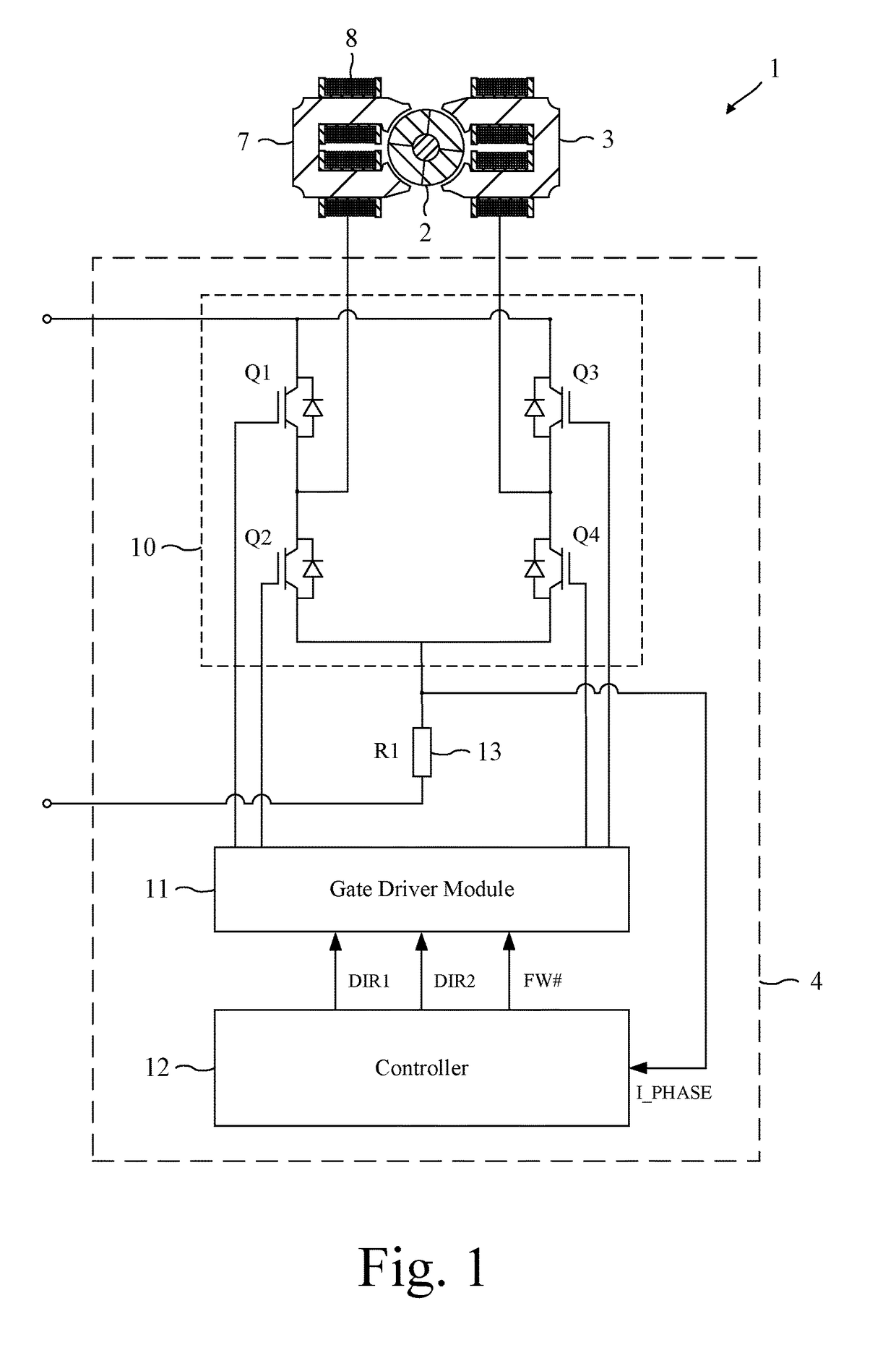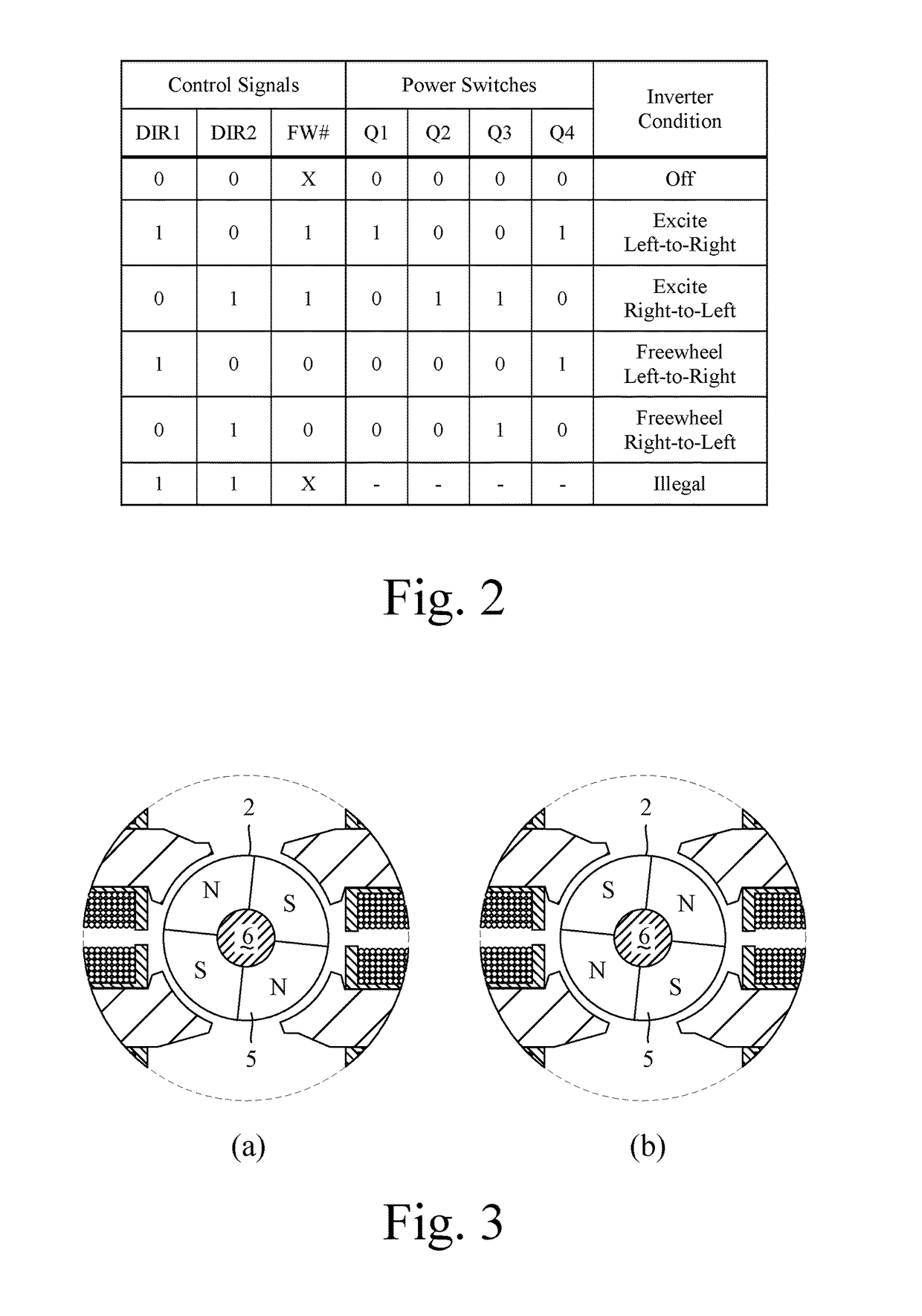Determining the parked position of a permanent-magnet motor
a permanent magnet, parked position technology, applied in the direction of electronic commutators, dynamo-electric machine testing, starter arrangements, etc., can solve the problem of incorrectly determining the parked position of the rotor, and achieve the effect of cheaper current sensors
- Summary
- Abstract
- Description
- Claims
- Application Information
AI Technical Summary
Benefits of technology
Problems solved by technology
Method used
Image
Examples
Embodiment Construction
[0017]The permanent-magnet motor 1 of FIG. 1 comprises a rotor 2, a stator 3, and a control system 4.
[0018]The rotor 2 comprises a four-pole permanent magnet 5 secured to a shaft 6. The stator 3 comprises a pair of cores 7 having four salient poles, and a phase winding 8 wound about the cores 7.
[0019]The control system 4 comprises an inverter 10, a gate driver module 11, a controller 12, and a current sensor 13.
[0020]The inverter 10 comprises a full bridge of four power switches Q1-Q4 that couple the phase winding 8 to the voltage rails of a power supply (not shown).
[0021]The gate driver module 11 drives the opening and closing of the switches Q1-Q4 in response to control signals output by the controller 12.
[0022]The controller 12 is responsible for controlling the operation of the motor 1 and generates three control signals: DIR1, DIR2, and FW#. The control signals are output to the gate driver module 11, which in response drives the opening and closing of the switches Q1-Q4.
[0023]...
PUM
 Login to View More
Login to View More Abstract
Description
Claims
Application Information
 Login to View More
Login to View More - R&D
- Intellectual Property
- Life Sciences
- Materials
- Tech Scout
- Unparalleled Data Quality
- Higher Quality Content
- 60% Fewer Hallucinations
Browse by: Latest US Patents, China's latest patents, Technical Efficacy Thesaurus, Application Domain, Technology Topic, Popular Technical Reports.
© 2025 PatSnap. All rights reserved.Legal|Privacy policy|Modern Slavery Act Transparency Statement|Sitemap|About US| Contact US: help@patsnap.com



